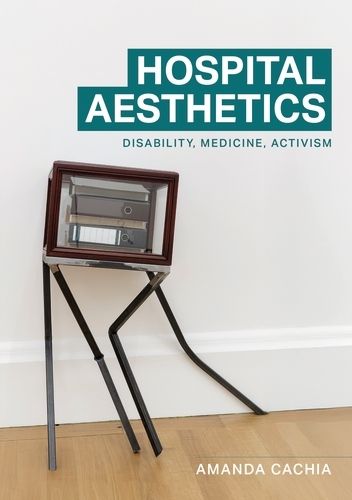Readings Newsletter
Become a Readings Member to make your shopping experience even easier.
Sign in or sign up for free!
You’re not far away from qualifying for FREE standard shipping within Australia
You’ve qualified for FREE standard shipping within Australia
The cart is loading…






Hospital aesthetics: Disability, medicine, activism argues that contemporary disabled artists are offering a new hospital aesthetics, where health and care are being taken into their own hands and body-minds. Hospital aesthetics is defined as artwork that explores the ever-subjective experience of illness, set apart from and outside of a clinical or therapeutic setting, and in opposition to the medical model of disability. The author examines the work of nine contemporary disabled artists and four care collectives from the United States, Canada, and Europe across five chapters, utilising a range of mediums including drawing, sculpture, installation, painting, performance, video, and socially engaged art practice to illustrate "hospital aesthetics."
The visual culture of medicine typically undermines and controls disabled bodies, often resulting in unfavourable physical and psychological outcomes. It is therefore imperative that disabled artists establish a hospital aesthetics to rescript medical images of disability, both past and present, particularly in the context of the COVID-19 pandemic. In doing so, contemporary disabled artists contribute to a form of disability activism that seeks to improve mainstream bioethics as well as ableist museum and gallery culture. Hospital aesthetics presents a different perspective on disabled bodies, aiming to undo the social and cultural impacts hospitals have had on disabled patients, both historically and today.
$9.00 standard shipping within Australia
FREE standard shipping within Australia for orders over $100.00
Express & International shipping calculated at checkout
Hospital aesthetics: Disability, medicine, activism argues that contemporary disabled artists are offering a new hospital aesthetics, where health and care are being taken into their own hands and body-minds. Hospital aesthetics is defined as artwork that explores the ever-subjective experience of illness, set apart from and outside of a clinical or therapeutic setting, and in opposition to the medical model of disability. The author examines the work of nine contemporary disabled artists and four care collectives from the United States, Canada, and Europe across five chapters, utilising a range of mediums including drawing, sculpture, installation, painting, performance, video, and socially engaged art practice to illustrate "hospital aesthetics."
The visual culture of medicine typically undermines and controls disabled bodies, often resulting in unfavourable physical and psychological outcomes. It is therefore imperative that disabled artists establish a hospital aesthetics to rescript medical images of disability, both past and present, particularly in the context of the COVID-19 pandemic. In doing so, contemporary disabled artists contribute to a form of disability activism that seeks to improve mainstream bioethics as well as ableist museum and gallery culture. Hospital aesthetics presents a different perspective on disabled bodies, aiming to undo the social and cultural impacts hospitals have had on disabled patients, both historically and today.